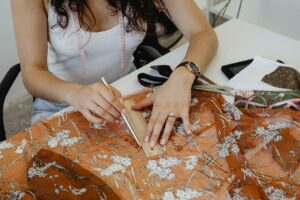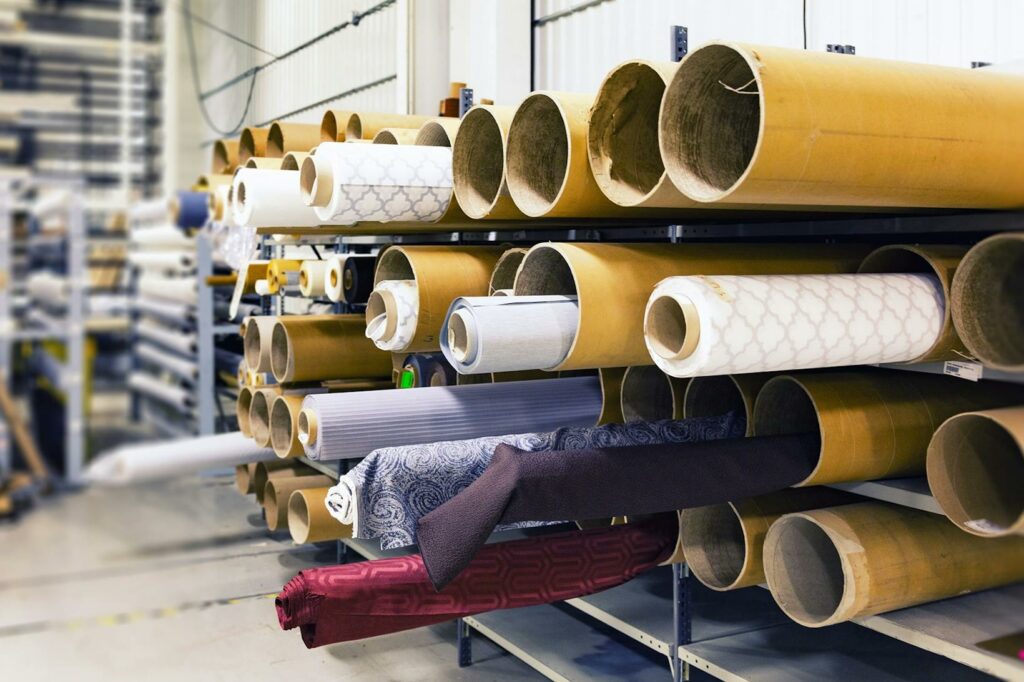The textile industry plays a significant role in our daily lives, from the clothes we wear to the fabrics in our homes. As sustainability becomes an increasingly crucial focus in various sectors, the textile industry is also striving to embrace more eco-friendly practices. This shift towards sustainability in the textile industry is not only driven by consumer demand for ethically produced goods but also by the industry’s recognition of the environmental impact of its operations.
Sustainability In Textile Industry
 The textile industry faces several challenges in achieving sustainability despite ongoing efforts. Companies encounter obstacles such as high energy consumption, water pollution, and waste generation in their pursuit of eco-friendly practices.
The textile industry faces several challenges in achieving sustainability despite ongoing efforts. Companies encounter obstacles such as high energy consumption, water pollution, and waste generation in their pursuit of eco-friendly practices.
Emphasizing sustainability is crucial for addressing the environmental impacts of textile production.
Innovations Driving Sustainability
In the textile industry, innovations play a vital role in driving sustainability efforts. Here are specific areas where advancements are making a significant impact:
Sustainable Materials and Fabrics
- Plant-Based Fibers: Innovations in textile production have led to the development of plant-based fibers like organic cotton, hemp, and bamboo. These materials require less water and pesticides compared to traditional options, reducing the environmental impact of textile manufacturing.

- Recycled Fabrics: Manufacturers are increasingly incorporating recycled materials, such as polyester made from recycled plastic bottles, into their fabric production. This practice helps reduce waste generation and reliance on virgin resources.
- Biodegradable Textiles: Another innovative approach involves creating textiles that are biodegradable, allowing them to naturally decompose at the end of their lifecycle. Fabrics like Tencel, made from wood pulp, offer a sustainable alternative to conventional materials.
- Chemical Recycling: Advanced technologies now enable the chemical recycling of textiles, breaking down used fabrics into their molecular components to create new fibers. This process has the potential to significantly reduce waste and energy consumption in the industry.
- Mechanical Recycling: Mechanical recycling methods involve shredding, melting, and reforming textile waste into new products. With continuous improvements in mechanical recycling technologies, textile companies can enhance their circular economy practices.
- Digital Sorting Systems: Textile recyclers are implementing digital sorting systems equipped with sensors and artificial intelligence to efficiently separate different types of textiles for recycling. This automated process enhances the recovery of valuable materials from discarded clothing and textiles.
Future Trends in Sustainable Textiles
The future of sustainable textiles is heavily influenced by ongoing research and development efforts to innovate eco-friendly solutions within the industry. Various avenues are being explored to enhance sustainability in textile production and consumption.
- Advanced Fiber Technologies: Researchers are focusing on developing innovative fibers that have minimal environmental impact. Examples include fibers derived from agricultural by-products like banana stems, pineapple leaves, or hemp.
- Smart Textiles: Advances in technology are enabling the creation of smart textiles with embedded sensors that can monitor environmental conditions, leading to more efficient resource utilization.
- Nanotechnology Applications: Nanoparticles are being used to enhance textile properties such as durability and water resistance while reducing the need for harmful chemicals in the production process.
- Circular Economy Models: The adoption of circular economy principles is gaining traction, promoting the reuse, recycling, and upcycling of textile materials to minimize waste and resource consumption.
- Biodegradable Finishes: Researchers are exploring biodegradable finishes for textiles to ensure that products decompose naturally at the end of their lifecycle, reducing environmental impact.
- Digitalization and Automation: The use of digital technologies and automation in textile manufacturing processes is streamlining production, reducing energy consumption, and optimizing resource utilization.
 The continual exploration of these research and development avenues holds the key to shaping the future landscape of sustainable textiles, driving the industry towards greater environmental responsibility and innovation.
The continual exploration of these research and development avenues holds the key to shaping the future landscape of sustainable textiles, driving the industry towards greater environmental responsibility and innovation.
Looking ahead, the future of sustainable textiles holds promise with cutting-edge fiber technologies, smart textiles, circular economy models, and digital manufacturing processes shaping a more environmentally responsible and innovative industry.



